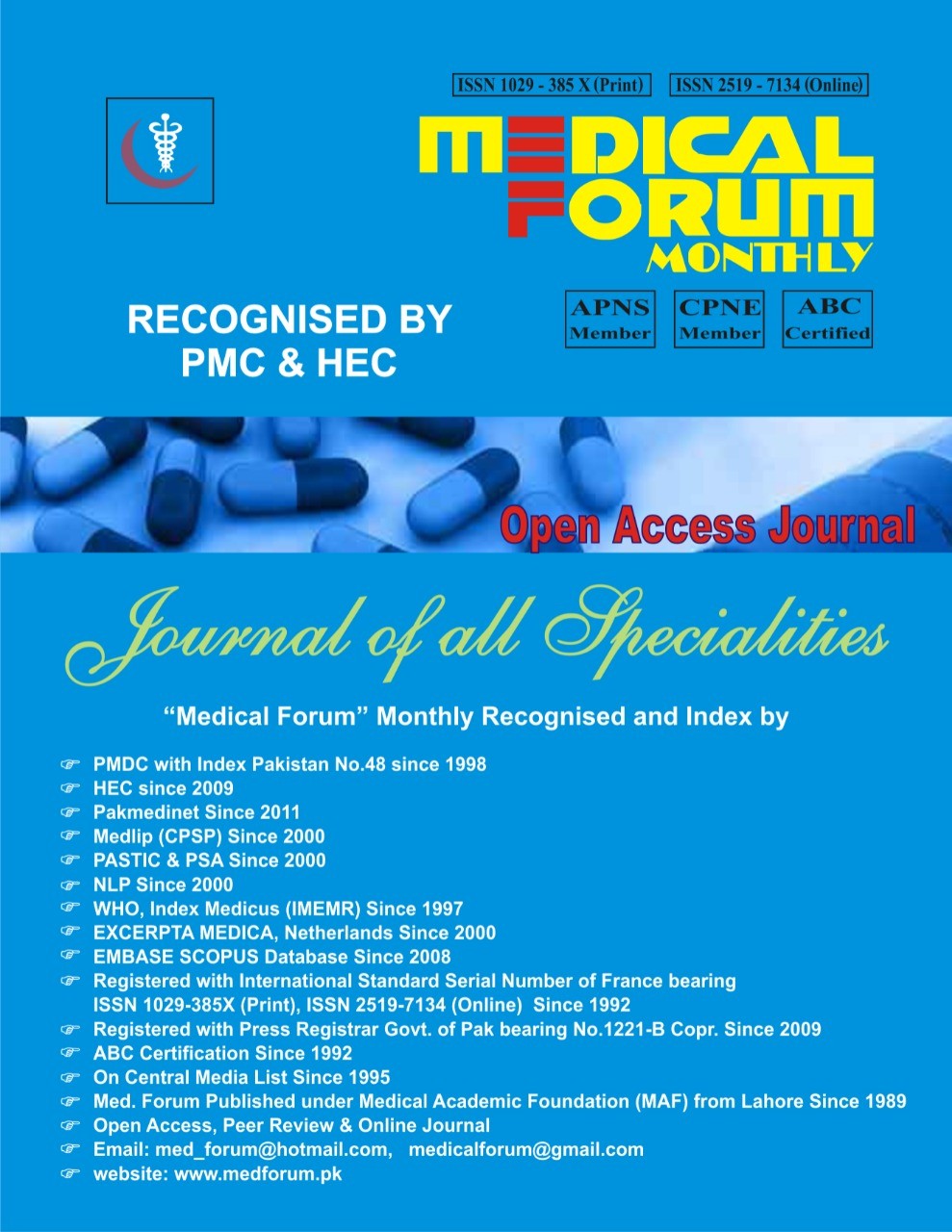
8.Practices of Blunt Abdominal Trauma in a Government Tertiary Care Hospital, Karachi, Pakistan
Aqsa Ismail, Rizwan Ahmed Khan, M. Hassan ul Haq, Bushra Tasneem, Ayesha Tasneem and Rahil M Rahman
ABSTRACT
Objective: To determine the frequencies of different kinds of management provided to the patient presented with blunt abdominal trauma (BAT) in a government tertiary care center in Karachi, Pakistan.
Study Design: prospective descriptive analytic study
Place and Duration of Study: This study was conducted at the Surgical Department, Abbasi Shaheed Hospital Karachi from July 2019 to July 2021.
Materials and Methods: The data was captured using a pre-designed and pre-tested questionnaire. Data of all patients admitted in hospital diagnosed with blunt abdominal trauma were prospectively collected. Advance Trauma Life Support (ATLS) protocols were used to treat the trauma. Laboratory and imaging investigation were done to make diagnosis and manage patients. Data was entered and analyzed using SPSS version 26.0. Descriptive statistics were reported in terms of mean ± SD/median, frequency and percentage where appropriate
Results: Total 84 BAT patients were reviewed during the study period. Mean age of patients was 31.3 ± 12.2 years. Majority of the injured patients were males (n=73, 86.9%) and were symptomatic cases (n=77, 91.7%). More than half of the cases had injuries other than abdomen as well (n=53, 63.1%). Abdomen was tender on presentation among more than half of the patients (n=51, 60.7%). X-ray (n=60, 71.4%), ultrasound fast (n=54, 64.3%) and laboratory investigations (n=54, 64.3%) were done for majority of the patients. CT-scan for abdomen was performed in nearly quarter of the patients (n=25, 29.8%). Few patients did not survive (n=10, 11.9%). 78.6% of patients were treated conservatively and 21.4 % of patients underwent surgical interventions
Conclusion: For vitally stable patients with blunt injuries, non-operative therapy has become the gold standard. Although NOM has a greater failure probability in patients with multiple solid organ injuries, in most vitally stable individuals who do not have peritoneal symptoms, it can still be taken with caution.
Key Words: Blunt abdominal trauma (BAT), hemodynamically or vitally stability, non-operative management (NOM), Injury, Focused assessment with sonography in trauma (FAST)
Citation of article: Ismail A, Khan RA, Haq MH, Tasneem B, Tasneem A, Rahman RM. Practices of
Blunt Abdominal Trauma in a Government Tertiary Care Hospital, Karachi, Pakistan. Med Forum 2022;33(3):30-34.
